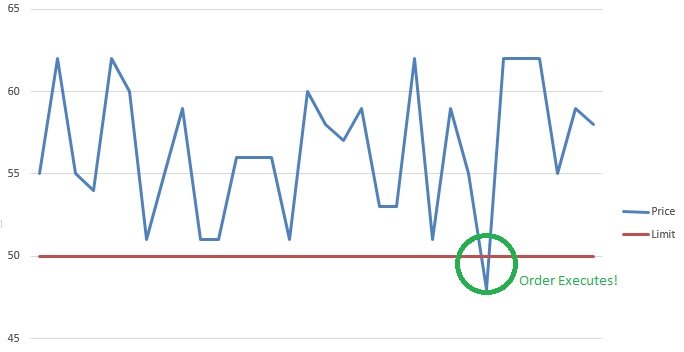Definition: A stop order is an order to buy or sell a stock when the stock price reaches a specified price, which is known as a stop price. When the specified price is reached, the stop order becomes a market order.
More Detail: Stop orders are different from limit orders in that a buy stop order is placed above the current market price, and a buy limit order is placed below the current market price. A sell stop order is placed below the current market price, and a sell limit order is placed above the current market price.
(a) A Sell Stop Order is used by investors and traders long a stock to protect an existing profit or avoid further losses if the stock price drops. A stop order to sell must be placed below the current market price.
(b) A Buy Stop Order is used by investors and traders short a stock to protect a profit or limit a loss if the stock price increases. Remember, a stop order to buy must be entered at a price above the current market price and a sell stop order must be entered at a price below the current market price..
Stop orders may be placed as “Day” orders which are good for the day only, or as “GTC” orders, which are good until cancelled.
Example:
Scenario 1: You have bought 100 shares of stock ABC.
Stock: ABC
Quantity: 100
Purchase Price: $10
Position type: LONG
Market value: 100 X 10 = $1,000
Say you did not want to lose more than $500 on your long position in ABC. You would put in a “STOP SELL” order with a target price of $5 for all your 100 shares.
This way, if the market price in the market dropped from $10 to $5, and continued falling even more, you can rest assured that your shares would be sold at your target price, and the maximum loss you would incur would be:
($5 – $10) X 100 shares = -$500.
Scenario 2: You have shorted 100 shares of stock XYZ.
Stock: XYZ
Quantity: -100
Short Price: $10
Position type: SHORT
Market value: -100 X 10 = -$1,000
Say you did not want to lose more than $500 on your short position in XYZ. You would put in a “STOP BUY” order with a target price of $15 for all your 100 shares.
This way, if the market price in the market rose from $10 to $15, and continued rising even more, you can rest assured that your shares would be bought at your target price, and the maximum loss you would incur would be:
($10 – $15) X 100 shares = -$500.
